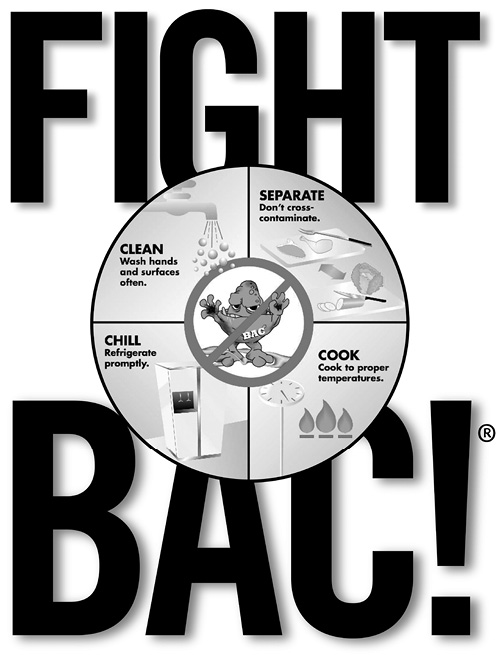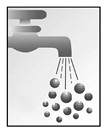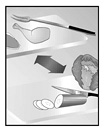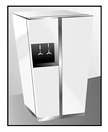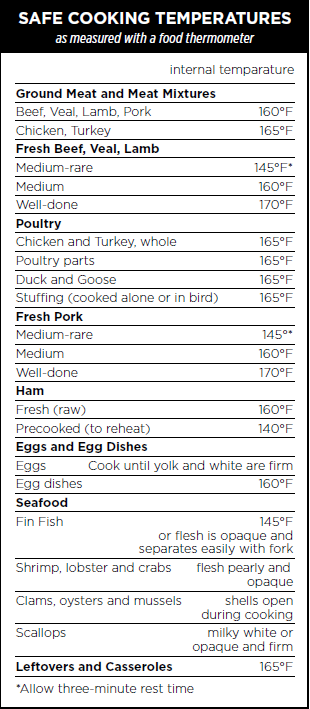Fight BAC! Fight Foodborne Bacteria (FN582, Reviewed Feb 2019)
Availability: Web only
Four Simple Steps to Food Safety
BAC (foodborne bacteria) could make you and those you care about sick. In fact, even though you can’t see BAC—or smell him, or feel him—he and millions more like him may have already invaded the food you eat. But you have the power to Fight BAC!®.
Foodborne illness can strike anyone. Some people are at a higher risk for developing foodborne illness, including pregnant women, young children, older adults and people with weakened immune systems. For these people the following four simple steps are critically important:
CLEAN: Wash hands and surfaces often
Bacteria can be spread throughout the kitchen and get onto hands, cutting boards, utensils, counter tops and food. To Fight BAC!®, always:
- Wash your hands with warm water and soap for at least 20 seconds before and after handling food and after using the bathroom, changing diapers and handling pets.
- Wash your cutting boards, dishes, utensils and counter tops with hot soapy water after preparing each food item and before you go on to the next food.
- Consider using paper towels to clean up kitchen surfaces. If you use cloth towels wash them often in the hot cycle of your washing machine.
- Rinse fresh fruits and vegetables under running tap water, including those with skins and rinds that are not eaten.
- Rub firm-skin fruits and vegetables under running tap water or scrub with a clean vegetable brush while rinsing with running tap water.
SEPARATE: Don’t cross-contaminate
Cross-contamination is how bacteria can be spread. When handling raw meat, poultry, seafood and eggs, keep these foods and their juices away from ready-to-eat foods. Always start with a clean scene—wash hands with warm water and soap. Wash cutting boards, dishes, countertops and utensils with hot soapy water.
- Separate raw meat, poultry, seafood and eggs from other foods in your grocery shopping cart, grocery bags and in your refrigerator.
- Use one cutting board for fresh produce and a separate one for raw meat, poultry and seafood.
- Never place cooked food on a plate that previously held raw meat, poultry, seafood or eggs.
COOK: Cook to proper temperatures
Food is safely cooked when it reaches a high enough internal temperature to kill the harmful bacteria that cause illness. Refer to the chart on the back of this brochure for the proper internal temperatures.
- Use a food thermometer to measure the internal temperature of cooked foods. Make sure that meat, poultry, egg dishes, casseroles and other foods are cooked to the internal temperature shown in the chart on the back of this brochure.
- Cook ground meat or ground poultry until it reaches a safe internal temperature. Color is not a reliable indicator of doneness.
- Cook eggs until the yolk and white are firm. Only use recipes in which eggs are cooked or heated thoroughly.
- When cooking in a microwave oven, cover food, stir and rotate for even cooking. Food is done when it reaches the internal temperature shown on the back of this brochure.
- Bring sauces, soups and gravy to a boil when reheating.
CHILL: Refrigerate promptly
Refrigerate foods quickly because cold temperatures slow the growth of harmful bacteria. Do not over-stuff the refrigerator. Cold air must circulate to help keep food safe. Keeping a constant refrigerator temperature of 40°F or below is one of the most effective ways to reduce the risk of foodborne illness. Use an appliance thermometer to be sure the temperature is consistently 40°F or below. The freezer temperature should be 0°F or below.
- Refrigerate or freeze meat, poultry, eggs and other perishables as soon as you get them home from the store.
- Never let raw meat, poultry, eggs, cooked food or cut fresh fruits or vegetables sit at room temperature more than two hours before putting them in the refrigerator or freezer (one hour when the temperature is above 90°F).
- Never defrost food at room temperature. Food must be kept at a safe temperature during thawing. There are three safe ways to defrost food: in the refrigerator, in cold water, and in the microwave. Food thawed in cold water or in the microwave should be cooked immediately.
- Always marinate food in the refrigerator.
- Divide large amounts of leftovers into shallow containers for quicker cooling in the refrigerator.
- Use or discard refrigerated food on a regular basis. Check USDA cold storage information for optimum storage times.
Apply the heat... and Fight BAC!®
Cooking food to the proper temperature kills harmful bacteria. So Fight BAC!® by thoroughly cooking your food as follows:
Be a BAC Fighter
Make the meals and snacks from your kitchen as safe as possible. CLEAN: wash hands and surfaces often; SEPARATE: don’t cross-contaminate; COOK: to proper temperatures, and CHILL: refrigerate promptly. Be a BAC Fighter and Fight BAC!®
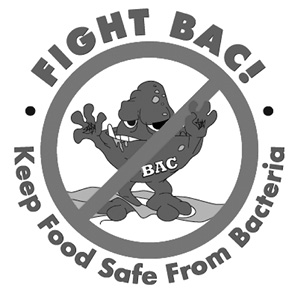
For More Information about Safe Food Handling and Preparation
USDA’s Meat and Poultry Hotline
1-888-MPHotline (1-888-674-6854)
FDA’s Food Information and Seafood Hotline
1-800-332-4010
Partnership for Food Safety Education Web Site
Or contact your local extension office.
Sign up to be a BACFighter

